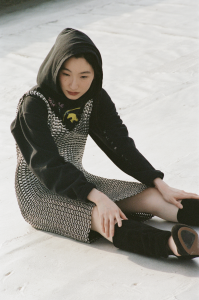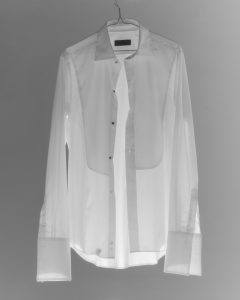Levi’s historian Lynn Downey tells David Hellqvist how a makeshift overall became a modern staple

There’s a fireproof safe in the basement of Levi Strauss & Co’s headquarters in San Francisco. Among other things, it’s where company historian Lynn Downey keeps two pairs of 19th century 501 jeans. Launched in 1873, the classic Levi’s 501 this year celebrates 140 years of service to workmen, fashionistas and civilians alike. When it was launched, alternatives were already available, but it was Levi Strauss – together with his partner Jacob Davis – who made the workwear staple even sturdier by adding rivets at the points of strain. This small yet important detail revolutionised both utility and fashion, and the way we dress all over the world. Today, Levi’s designers use the archive for inspiration, feeding vintage details back into contemporary collections in which authenticity is key. A century ago, however, the main customers were not so fashion-conscious: miners and cowboys chose Levi’s because no other jeans could compete with their longevity. “The first 501 had 11 rivets, we then added another pocket so you’d get 13 rivets. It’s the most basic thing, but it’s the denim, rivets, buttons and packaging that expresses who we are,” Downey says of Levi’s heritage. Downey is interested in the history of jeans for their cultural significance as much as their sartorial development: “When I started working for Levi’s there were still restaurants in my area where you couldn’t wear jeans. I can’t think of any other garment that has had that sort of impact.”
”Lots of American soldiers didn’t want to move to the suburbs and make babies,
so they put on their jeans and formed motorcycle clubs“
He remembers how denim came to be associated with youth rebellion during the post-WWII era. “After the war, lots of American soldiers didn’t want to move to the suburbs and make babies so they put on their jeans, white T-shirts and their leather jackets and formed motorcycle clubs, just trying to find themselves after the horror of war. But it freaked out American society,” Downey explains. “One club, which turned into a gang, was located in Hollister, California. These guys got a little bit rowdy, nothing that bad, but enough for Life magazine to run a photo of a guy leaning on his motorcycle, dead drunk with empty beer bottles in the gutter. The photo was the inspiration for a short story called ‘The Cyclists’ Raid’ that then got turned into the movie The Wild One with Marlon Brando.” Brando’s appearance as a denim-clad rebel wasn’t assured, however. “In the short story the bikers were wearing khaki jodhpurs, like the riding pants the American highway patrol wear. In the movie, the costume designer put them in denim, as it was already code for rebellion. The author of the short story chose jodhpurs for whatever reason, but it was Hollywood that made the connection.” Few garments have traversed class and culture like the Levi’s 501. Designed for hard labour, they became the ultimate symbol for youth anarchy. Today, they’re a natural part of everyone’s wardrobe, rebellious or otherwise.




